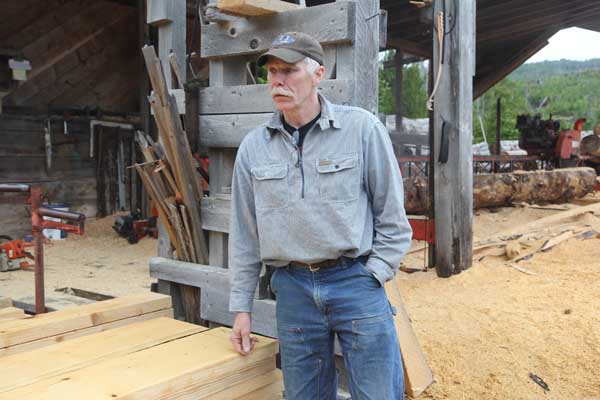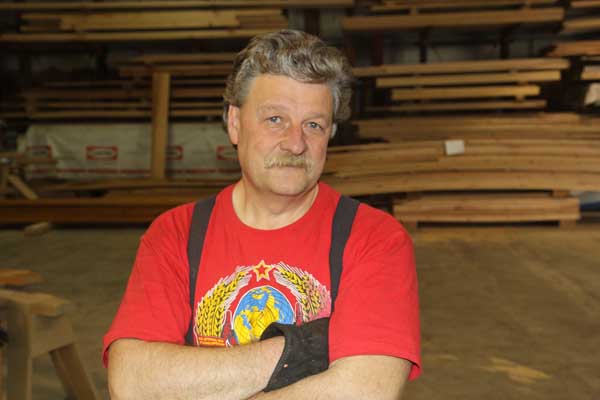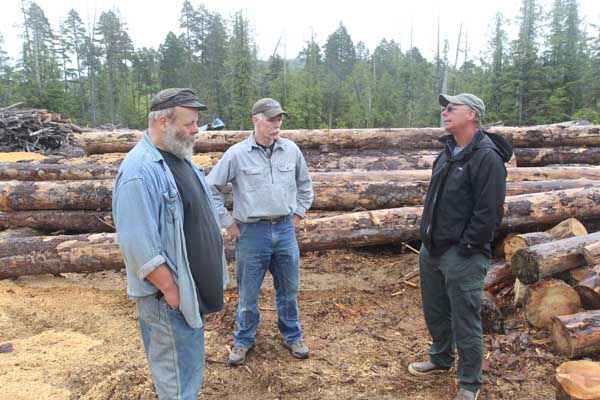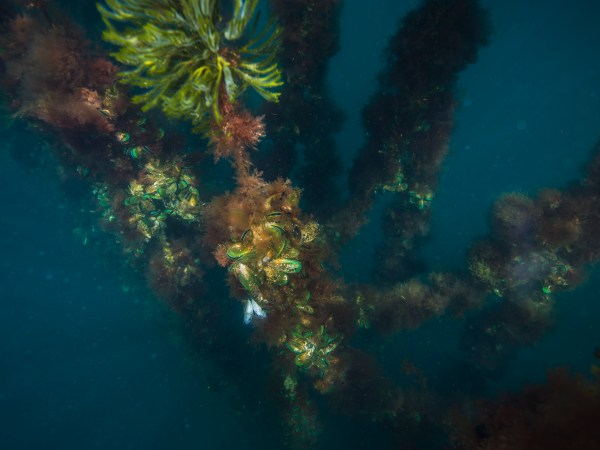Success in conservation is rooted in increasingly sophisticated science: computer models, ecological research and careful analyses.
Here’s the thing: science can only get conservation so far.
Take Prince of Wales Island in Southeast Alaska, where I’ve spent the last couple of days learning about forest restoration with Conservancy colleagues Keith Rush and Michael Kampnich. The island had been heavily logged 30+ years ago, and today much of the island is covered in dense, uniform stands of young growth trees that are of little value to wildlife.
There is extensive research behind the restoration, including how to create markets for the young growth trees cleared by restoration activities. Different kinds of research inform foresters on how to transition the logging industry on the island from old growth trees to young growth trees. (See yesterday’s blog for an in-depth feature on this work and the science behind it). But, ultimately, the science is only part of what will make this conservation successful. The rest lies with people and their relationships.
That’s why I’m now at a small sawmill in the forest, one where logs sit are stowed in abandoned pick-up trucks. As lumber mills go, this one frankly doesn’t look like much.
I’ve toured large timber mills, with computerized cutting and automated packaging lines. Here, though, one man does most of this work by hand. Which isn’t to say it’s inexact: the boards here are straight and clean, the work of a skilled timber man.
Mel Cook, who owns and operates this mill, at first seems taciturn, reluctant to answer questions. Then the topic turns to wood, and he comes alive, looking at logs, handling 2 x 4s, sizing up his product.
“I bought the equipment here to build a house in 1982,” says Cook. “I still haven’t built the house, but I’ve been cutting wood ever since.”
Cook says he’s seen a lot of changes in that time, “mostly due to environmentalists,” he says with a huff.
And so at first glance it may seem unlikely that Cook, and other mill owners like him, could be essential in restoring the forests of Prince of Wales Island in southeastern Alaska, where his mill is located. But that is exactly the case.
Yes, the research that informs the restoration of a uniform, young growth forest is extensive and impressive. But in the end, the success will depend in part whether mill owners like Mel Cook are willing to work with wood from young growth trees.
That’s not a given. Many of the mill owners here have worked with old growth wood for decades. There’s tradition. There’s peer pressure. There’s suspicion of conservation groups.
Cook has been willing to work with the Conservancy by utilizing young growth wood, and provides honest feedback. “I’ve been doing this a long time but I’m still always learning,”he says.
He is also interested in the studies being done wood strength and quality of young growth, how it will hold nails, screws and fastenings. He is interested to how his boards compare to those made from young growth in the Pacific Northwest.
He also hates waste, and any sawmill generates a lot of it in the form of sawdust. Piles of it frame his lumber yard. “It’s like sitting on a bomb,” he says. “Right now, we have to burn it or it will go up in smoke anyhow.”
Here, too, conservationists are proposing a solution: A biomass plant that converts sawdust to fuel for pellet stoves. It could help add value to young growth and provide extra income to folks like Cook.
Ultimately, for folks like him to sign on, it will take more than research: it will take trust and solid relationships with conservationists.
No computer model can provide that. No peer-reviewed literature can provide an instruction manual for building trust.
To some, that may sound close to heresy. The reality is, anywhere in the world, the research can move conservationists in the right direction but the success or failure of a project is ultimately determined by communities, by individuals and by relationships.
That’s why on-the-ground conservation staff – the heart and soul of The Nature Conservancy, in my opinion – do not have to only be versed in the science, they also have to be adept at understanding people.

Field representative Michael Kampnich understands this. I spent hours talking to him about the science of restoration, but he sees it as only part of the work. Even more important are meetings like this, talking wood quality with folks like Mel Cook. He understands well where the loggers are coming from: he worked for years as a commercial logger.
Riding in his truck, he told me of cutting a massive spruce tree and then sitting down to lunch and counting 800 rings. He knows the world of bucking logs and fixing chainsaws and sizing up wood quality. He spends weeks of each summer working as a commercial fisherman. He knows well the struggles faced by folks here, because he still sees himself as one of them.
“The sawmill owners and workers are not doing this to get rich,” he says. “They’re their own bosses. They have some freedom. Every last one of them will tell you they love it. They need to feel the sawdust running through their fingers.”
Of New Starts and Young Growth

After leaving Cook’s facility, we drive down the road to another mill, named Good Faith. Rush and Kampnich had heard there was a new cabinet maker working there who was amenable to working with young growth.
Michael Farr, the cabinet maker, handles plywood with the same easy grace as did Mel Cook, but Farr does not quite look the part of the Alaska timber man. He reminds me of a neighbor from my youth in the eastern United States. For good reason: it turns out that Farr lived most of his life just 25 miles away from my childhood home in central Pennsylvania, where my parents and brother still live.
Farr built his own highly successful custom cabinetry business, North Mountain Joinery, in Pennsylvania. In the 90s, he began noticing changes. “People no longer saw quality as the top priority. Cheaper is better became the mentality,” he says. “Then the recession wiped me out.”
He smiled but worry lines etched his face. “I never thought I’d leave central Pennsylvania,” he says. “But I took a risk and moved here to start over six weeks ago. It feels like I moved to another planet.”
Before we rejoin my Conservancy colleagues, Farr asks if I live on Prince of Wales. His face registers disappointment when I say no, perhaps because he was hoping to have someone to share memories of home. “This is a good place for me, a mom-and-pop operation where I can run a custom shop,” he says, but his eyes redden. “But keep me in your prayers. I took a big risk moving here. A big risk.”
He is soon back to looking at wood, discussing products with Kampnich and Rush. The anxiety is replaced with pride as he shows his craftsmanship. Unlike many people who work with wood on Prince of Wales Island, he is not tied to old growth product – he’s worked with young growth wood throughout his career.
Michael Farr may not only be making a fresh start, but also playing his own role in helping shape how forests are managed in southeastern Alaska. He has the expertise, the skill and the history to demonstrate how young growth can add value to sawmill operations.
Connections to people like him will help build a new industry built around young growth. The Conservancy’s Keith Rush is exploring many market possibilities, but ultimately he needs businesses and individuals willing to work with young trees – people like Farr and businesses like the Good Faith Mill.
In my twelve years working with The Nature Conservancy, I value these moments: when people take time to share their stories, to share their own hopes and worries and dreams. I’ve listened to Idaho ranchers tell stories of roping badgers and helped them pack freezers of beef. I’ve heard Colombia landowners describes how grassland conservation might shape a new future after dealing with decades of unspeakable violence. I’ve sat quietly as a former shark finner shared the moment he realized he wanted to save sharks, not kill them. And following my trip to the sawmills, I sat with members of the Haida and Tlingit communities who see salmon restoration and totem pole carving as parallel paths to restoring pride among their people (check back for an upcoming blog on this topic)
These are not the stories you read in a science journal article. But I would argue that scientists have to pay heed: they represent the point where the conservation plan, the research paper, meets the real world. The human world. Without relationships, the best any conservation plan can be is an abstract aspiration.
It might seem daunting, even unrealistic, when one thinks of all the handshakes, the cups of coffee, the listening, actually required for an on-the-ground conservation project to work.
I look at it differently: Sometimes the list of conservation challenges seems so overwhelming that solutions are difficult to envision. It’s easy to imagine throwing up one’s hands in despair in the face of climate change, deforestation, habitat destruction, species loss.
When I travel to places like Prince of Wales Island, though, I realize this: Individuals still matter hugely in this conservation effort. Relationships matter. You matter.
Science is the foundation of the Conservancy’s work on Prince of Wales. It directs staff and partners on where and how to conduct forest restoration and how to make it work economically. But I’m comforted to know that it is human relationship – in all its complexity – that ultimately determines what happens next.





Join the Discussion
1 comment